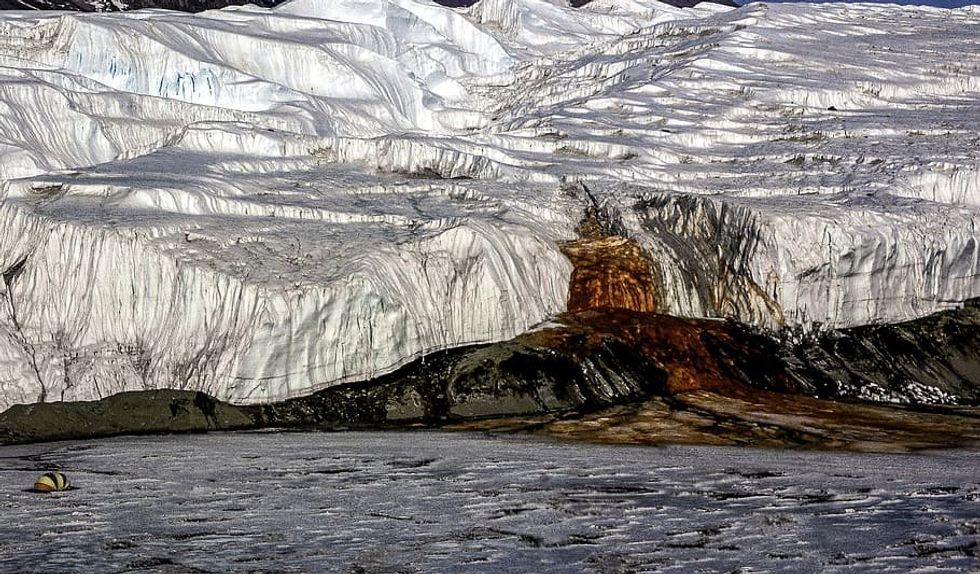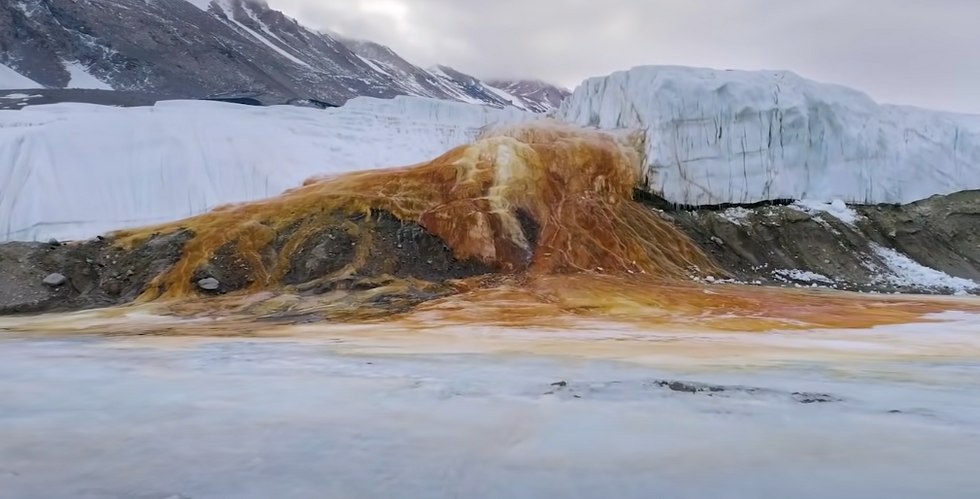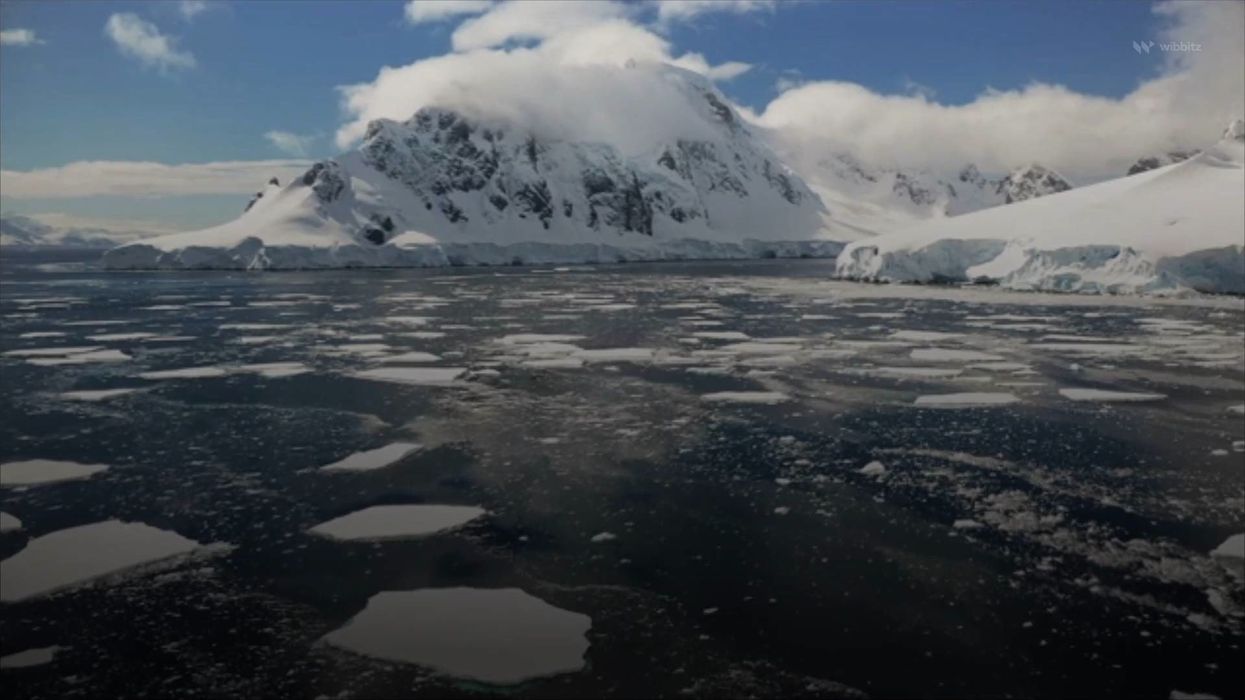Harry Fletcher
Jun 17, 2025
Scientists May Have Found Something Massive Living Under Antarctica
Antarctica’s Blood Falls is one of the strangest natural phenomena you're likely to see, and the mystery behind it has fascinated members of the scientific community for decades.
For the uninitiated, Blood Falls is a bizarre geographical feature in the McMurdo Dry Valleys region of the continent.
As the name suggests, a flow of water the colour of blood that can be seen seeping out from a glacier into the ocean.
It’s a striking feature against the white landscape, and it’s been intriguing observers since its discovery by geologist Thomas Griffith Taylor in 1911.
But what's behind the shocking red colour?

Initially, its discoverer Taylor believed that it could be down to red algae content in the water. It was one of the many theories posited about the true nature of Blood Falls, none of which were particularly persuasive.
It wasn’t just the colour of the water that left people baffled, either. The average temperature in the area is almost -19 degrees Celcius – so the fact that the water was running and not frozen solid was just as surprising.
However, the truth was finally revealed in 2003, when researchers at the University of Alaska Fairbanks including National Geographic explorer Erin C Pettit put forward the definitive answer.
They found through the use of radio-echo technology that the running water has an extremely high salt content, which is double the levels they saw in seawater in the area. The high salt content pushes up the water’s freezing point, which explains why it’s still liquid at such cold temperatures.

It’s also high in iron content and the iron oxidises on contact with air, turning the water red, orange and brown.
The origin of the water is also interesting. Researchers explained the existence of the water after delving back into history 1.5 million years ago.
Back then, the salt water was contained in a lake. A glacier then moved over the lake and contained it there for thousands of years, before it spurted from underneath the ice at Blood Falls.
Pettit said: "While it sounds counterintuitive, water releases heat as it freezes, and that heat warms the surrounding colder ice.
"This source of heat within Taylor Glacier combines with the lower freezing temperature of salty water (brine) to make brine movement in the extremely cold ice possible.
"Taylor Glacier is now the coldest known glacier to have persistently flowing water."
This article was first published on April 13, 2023
Why not read...
- Strange structures found lurking beneath Antarctic ice
- A new accent from 'Antarctica' has been discovered by scientists
- Mysterious 'pyramid' discovered in Antarctica beneath the ice
Sign up to our new free Indy100 weekly newsletter
Have your say in our news democracy. Click the upvote icon at the top of the page to help raise this article through the indy100 rankings.
Top 100
The Conversation (0)














